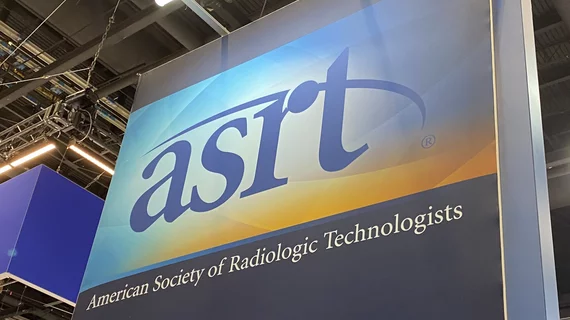Rad tech groups propose creating new entry-level role to relieve radiology staffing shortages
Rad tech groups are proposing establishing a new entry level role to help relieve staffing shortages in radiology.
The American Society of Radiologic Technologists and others are suggesting the potential creation of the “imaging medical aide” position that would support radiologic technologists by performing basic clinical tasks. Duties could include transporting patients, screening before MRIs and starting IVs, ASRT detailed in a white paper released Tuesday.
Some hospitals are already employing medical assistants in a similar fashion, and ASRT and other tech groups believe there is a need to “define and regulate the position.”
“Committee members recommend that [imaging medical aides] be required to complete a standardized educational curriculum and adhere to a professional scope of practice to be developed by the ASRT,” the July 16 white paper stated. “The curriculum could be offered by high schools as well as community colleges, with possible dual enrollment. Consensus Committee members noted that the IMA role might be attractive to staff who are already working in similar healthcare roles, such as phlebotomists, medical assistants and certified nursing assistants. These individuals could complete additional training focused on radiology-related topics and transition to the IMA role.”
The committee included representatives from 18 radiologic science organizations who met in February to discuss remedies for persistent staffing shortages. Among them were the ASRT, American Registry of Radiologic Technologists, and the Joint Review Committee on Education in Radiologic Technology.
Their work comes after a 2023 Professional Workforce Survey conducted by the societies, unearthing some concerning findings. ASRT et al. fielded the survey last year, reaching 8,701 individuals for a 2.5% response rate. Over 77% said they were working full time, while 14% are on a part-time schedule, and 9% said they were not currently on the job. Asked why they weren’t working, 60% said they had retired, 11% were unemployed but not looking for a gig in medical imaging or radiation therapy, and 10% were working in another profession.
Over 16% of respondents said they had changed jobs in the past year, and 68% of this segment had resigned. Common reasons included leaving due to burnout (25%), seeking better pay elsewhere (24%), problems with management (24%), or finding more desirable hours (21%). About 70% of those surveyed said they had experienced turnover among tech staff in their organization over the past year. On average, about five full-time equivalent techs departed from each respondents’ department in the past 12 months. Leaving for another facility (81%), burnout (35%), retirement (21%), family issues (16%), or COVID-related policies (12%) were common reasons.
“Survey data suggest that burnout, including emotional exhaustion and feeling underappreciated at work, are pervasive problems among medical imaging and radiation therapy professionals,” the report noted. “More than half of all respondents (54%) reported feeling emotionally exhausted at least a few times each month, and an even larger percentage (57%) said they felt underappreciated on the job at least a few times each month. On a more positive note, many respondents also reported frequently feeling a sense of personal accomplishment on the job, with more than 25% of staff technologists and therapists indicating they had a daily sense of personal accomplishment at work.”
ASRT and others hope that creating this new imaging medical aide role could help to relieve burnout and improve the rad tech pipeline. Currently, individuals enter the profession as either limited X-ray machine operators or registered technologists. Under the new pathway, IMAs who complete additional certification and education could eventually ascend to the rad tech role. Other possible IMA tasks could include obtaining health histories and checking weight/vital signs, the societies suggested.
“Importantly, IMA job duties would not include exposing patients to radiation or injecting contrast media,” the report noted. “Staff in the [limited X-ray machine operator] role will have additional education beyond the IMA level, including expanded knowledge of radiation protection and MR safety.”
The white paper comes after another recent ASRT survey, which found that vacancies across the profession had hit historic highs. Radiography, for one, faced a record 18% vacancy rate last year, up from 6% in 2021. A combination of an aging population needing more healthcare services, fewer tech students, increasing retirement numbers and burnout continue to fuel these shortages.
You can find the full white paper and additional proposals from the rad tech societies here.
“Work has already begun on several of the recommendations,” ASRT CEO and Executive Director Melissa B. Pergola said in a statement. “The level of buy-in from the supporting organizations has been truly inspiring.”

